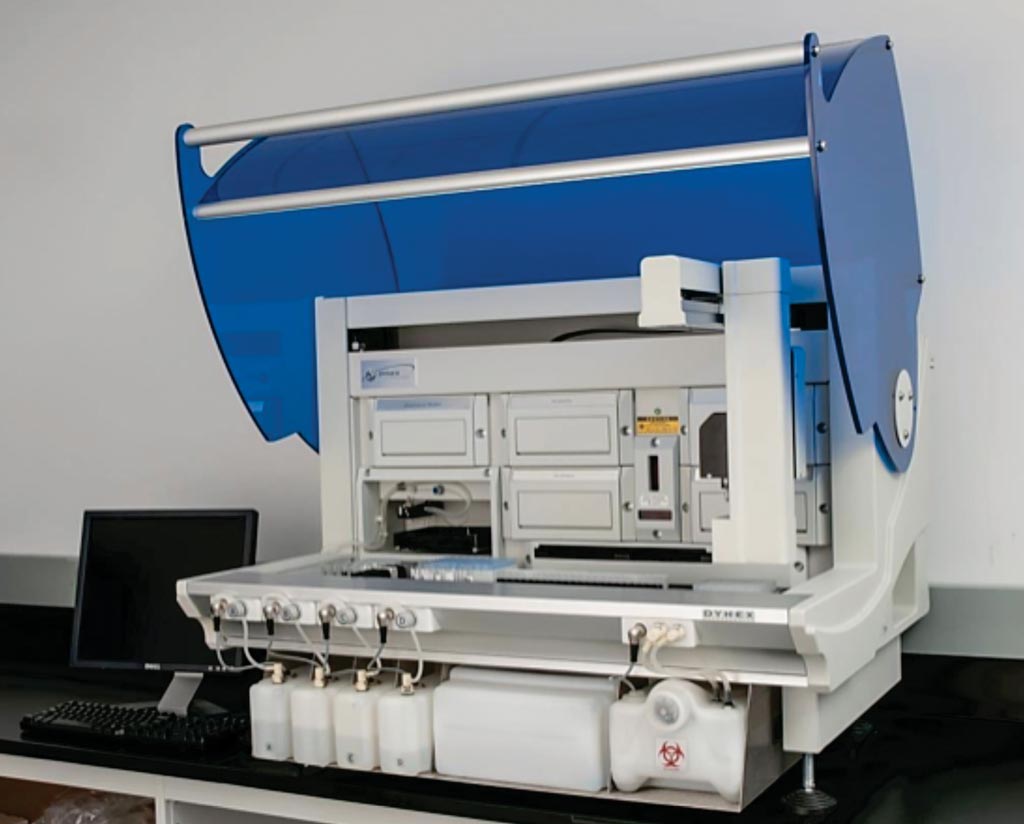Three Commercial Tests for Lyme Borreliosis Evaluated
By LabMedica International staff writers
Posted on 15 Aug 2017
The recommended approach for the diagnosis of Lyme borreliosis consists of screening for Borrelia-specific serum antibodies with an enzyme-linked immunosorbent assay (ELISA), followed by immunoblot confirmation of equivocal or positive ELISA results.Posted on 15 Aug 2017
The reliability of the serodiagnosis of Lyme borreliosis is influenced by various factors, including the manifestation and the duration of disease, the natural clearance of infection, antibiotic treatment, (age-specific) seroprevalence and the test characteristics, such as the antigens used.

Image: The automated ELISA instrument (Photo courtesy of Dynex Technologies).
A team of scientists led by those at the Diakonessenhuis Hospital (Utrecht, The Netherlands) investigated the diagnostic characteristics of two enzyme-linked immunosorbent assays (ELISAs) and an immunoblot for the detection of Borrelia-specific serum antibodies using different test strategies in individuals with and without antibiotic treatment for Lyme borreliosis. The retrospective study included 174 healthy individuals, of whom 27 (15.5%) were treated for Lyme borreliosis in the past, 36 patients were treated for Lyme neuroborreliosis and 27 patients had active Lyme neuroborreliosis For inclusion in the study, intrathecal IgM/IgG was determined by the second-generation IDEIA Lyme Neuroborreliosis test.
Serum samples of all study subjects were tested in two ELISAs and one immunoblot. All tests were performed using an automated Dynex DS2 ELISA instrument. The two ELISAs used were the C6 ELISA, which is based on a synthetic C6 peptide, which is derived from a highly immunogenic part (invariable region 6) of the VlsE lipoprotein and the SERION ELISA classic Borrelia IgM and IgG tests.
The team reported that all the active Lyme neuroborreliosis patients were reactive in both ELISAs (100% sensitivity); less reactivity was seen in the other three groups (range 17.7% to 69.4%). The concordance between the ELISA results was high in active Lyme neuroborreliosis patients (26/27; 96.3%) and healthy individuals (131/147; 89.1%), but lower in treated healthy individuals (18/27; 66.7%) and treated Lyme neuroborreliosis patients (18/36; 50.0%). They also showed that antibiotic treatment against Lyme borreliosis was strongly associated with discordant ELISA and test strategy results. This suggests that antibiotic treatment influences the pace at which the various antibodies directed to the different antigens used in both ELISAs wane.
The authors concluded that among treated neuroborreliosis patients, the SERION ELISA stayed positive for a longer period after infection compared to the C6 ELISA and this should be taken into consideration when requesting and/or interpreting Lyme serology. The study was published on July 26, 2017, in the European Journal of Clinical Microbiology & Infectious Diseases.













